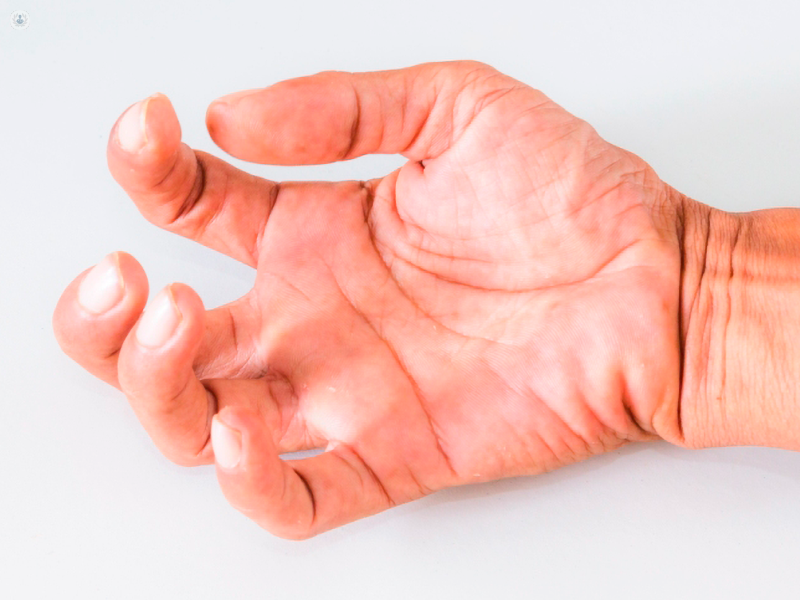

What is spasticity?
Spasticity is a muscle disorder that involves an abnormal increase in muscle tone. Muscle tone is the amount of tension we have in our muscles, and “normal” muscle tone is the natural level of tension that is required to hold ourselves up. An increase in the tension in the muscles causes them to become stiff and can result in involuntary muscle spasms.

How common is it?
Spasticity is common among people with certain long-term neurological conditions : it is present in 28-38% of patients with stroke, 41-66% patients with multiple sclerosis, and 13% of patients with traumatic brain injury.
What are the symptoms?
The symptoms of spasticity can include:
- muscle tightness / rigidity
- muscle tiredness
- uncontrollable isolated muscle spasms, or a series of involuntary spasms (clonus)
- exaggerated tendon reflexes
- contracture (permanent contracture of the muscles)
- pain from tense muscles or from spass
In some patients these issues can lead to sleeping difficulties, changes in posture, and decreased functional abilities (such as walking or going to the toilet).
What causes spasticity?
Spasticity is caused by damage to nerve cells in the spinal cord or brain. Aside from trauma to the brain or spine, there are a range of conditions which can result in nerve damage, including:
Regardless of the cause, some things can make spasticity worse. These usually involve unpleasant sensations, such as infections, extremes of temperature, constipation, skin irritation, or even stress and anxiety.
How is it diagnosed?
Diagnosis involves a thorough evaluation of your medical history, including the symptoms you have experienced, the conditions you have been affected by, and the medication you take.
Because some conditions that cause spasticity are linked to our genes, you will be asked about your family’s medical history.
Finally, the doctor will conduct a physical examination, looking at your muscle movements, your range of motion, and monitoring over time the frequency of spasms and clonus. They will also look at what activities you are struggling with and to what extent your abilities are limited.
To prepare for your appointment, it can be helpful to think about:
- how your symptoms vary during the day
- what you do to make the symptoms better
- what makes the symptoms worse
How is it treated?
Treatment aims to improve your mobility, reduce pain, and ultimately help you to better carry out the tasks that are important to you.
Treatment can involve:
- exercises – these will be tailored to your needs to stretch and strengthen your muscles
- medication – this can include tablets which target the entire body to relax the muscles, and injections to target specific muscle groups
- surgery – this is sometimes recommended for tendon release, or to implant a pump which administers muscle relaxant medication on a continuous basis
The right mix of treatment will vary from patient to patient. This is because each person’s priorities are different, and because some people will respond better to certain treatments than others.
